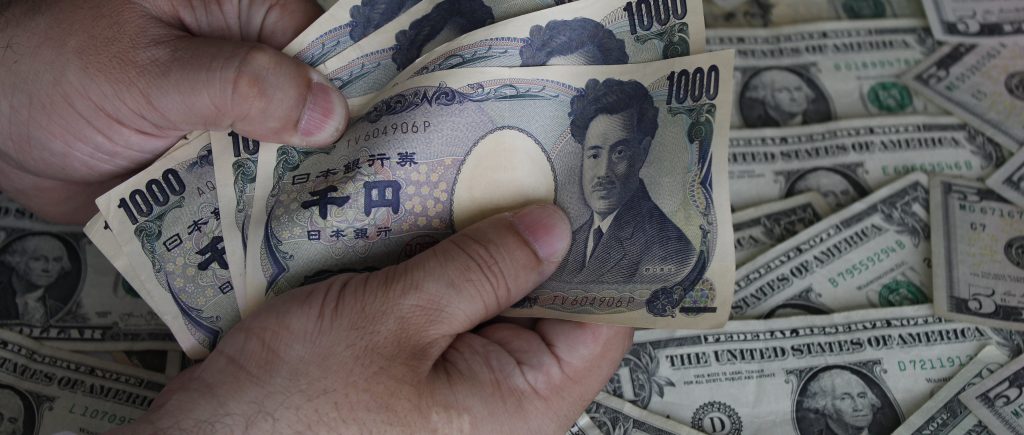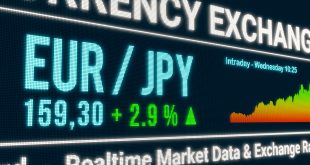Recent trade tensions, exemplified by new tariffs imposed by the U.S., have injected volatility into global markets, impacting the USD/JPY exchange rate. While the dollar initially strengthened, it subsequently retreated as market participants assessed the potential ramifications of these protectionist policies. This analysis examines the interplay of these trade dynamics with the yen, considering both short-term market reactions and longer-term projections derived from a comprehensive JGB and yen simulation.
Market Reaction to Trade Developments
The USD/JPY initially climbed to 155.86 following the announcement of new tariffs on Canada, Mexico, and China. However, as concerns about global economic stability mounted, the pair reversed course, dipping below its opening price. Global equity markets reflected this anxiety, trading in negative territory. While the immediate market reaction was significant, the USD/JPY ultimately stabilized, suggesting a degree of resilience in the face of trade-related uncertainty. The Bank of Japan’s January meeting Summary of Opinions, which highlighted the economy’s resilience and the potential for navigating such policies, may have contributed to this stability.
Technical Outlook for USD/JPY
From a technical perspective, the USD/JPY’s price action suggests a bearish trend. The formation of a “bearish candle” with a long upper shadow indicates resistance within the 154.78-155.88 range. The pair’s movement within the Ichimoku Cloud further reinforces this bearish outlook. Key support levels are identified at 153.76 (Senkou Span B) and 152.83 (200-day SMA). Conversely, a daily close above 155.00 could signal a potential upside, with resistance at 155.76 (Senkou Span A).
Long-Term Projections: JGB and Yen Simulation
Beyond immediate market reactions, a 100,000-scenario simulation conducted on January 31, 2025, provides insights into the long-term behavior of JGB yields and the yen/dollar exchange rate. This simulation considers the complex interplay of 12 factors influencing both JGB and U.S. Treasury yields, offering probabilistic forecasts for key financial indicators. It’s crucial to remember that exchange rates are also influenced by idiosyncratic risks separate from interest rate considerations.
JGB Yield Curve, Term Premium, and Exchange Rate Projections
The JGB term premium, reflecting the return demanded for holding longer-term bonds, exhibits a distinct pattern. Beyond ten years, it aligns with typical levels in major markets. However, for shorter maturities, the premium remains near zero, indicating a relatively flat yield curve. The simulation projects a median yen/dollar exchange rate of 159.88 one year forward, with a standard deviation of 11.91. This volatility is reflected in the pricing of yen/dollar options.
Inverted Yield Curve, Negative Rates, and Default Risk
The simulation also explores the probability of an inverted JGB yield curve, a potential recessionary indicator. The probability of inversion peaks at 21.2% in 2045. The probability of negative 3-month rates reaches 20.3% by 2030. Furthermore, the simulation assesses default risk arising from interest rate mismatches, highlighting the importance of risk management, particularly for leveraged investors.
JGB Yield Probabilities and the Yen’s Safe-Haven Status
Ten years out, the simulation projects the most likely range for the 3-month yield to be 0% to 1% and for the 10-year yield to be 2% to 3%. The yen’s recent resilience against the dollar, despite trade tensions, underscores its safe-haven status. While the dollar offers a yield advantage, the yen has strengthened against other currencies. This is likely driven by a combination of factors, including Bank of Japan policy and the yen’s perceived undervaluation.
However, this status could be challenged if Japan becomes a direct target of trade protectionism. The confluence of these factors will ultimately determine the yen’s future trajectory.
 Noor Trends News, Technical Analysis, Educational Tools and Recommendations
Noor Trends News, Technical Analysis, Educational Tools and Recommendations





